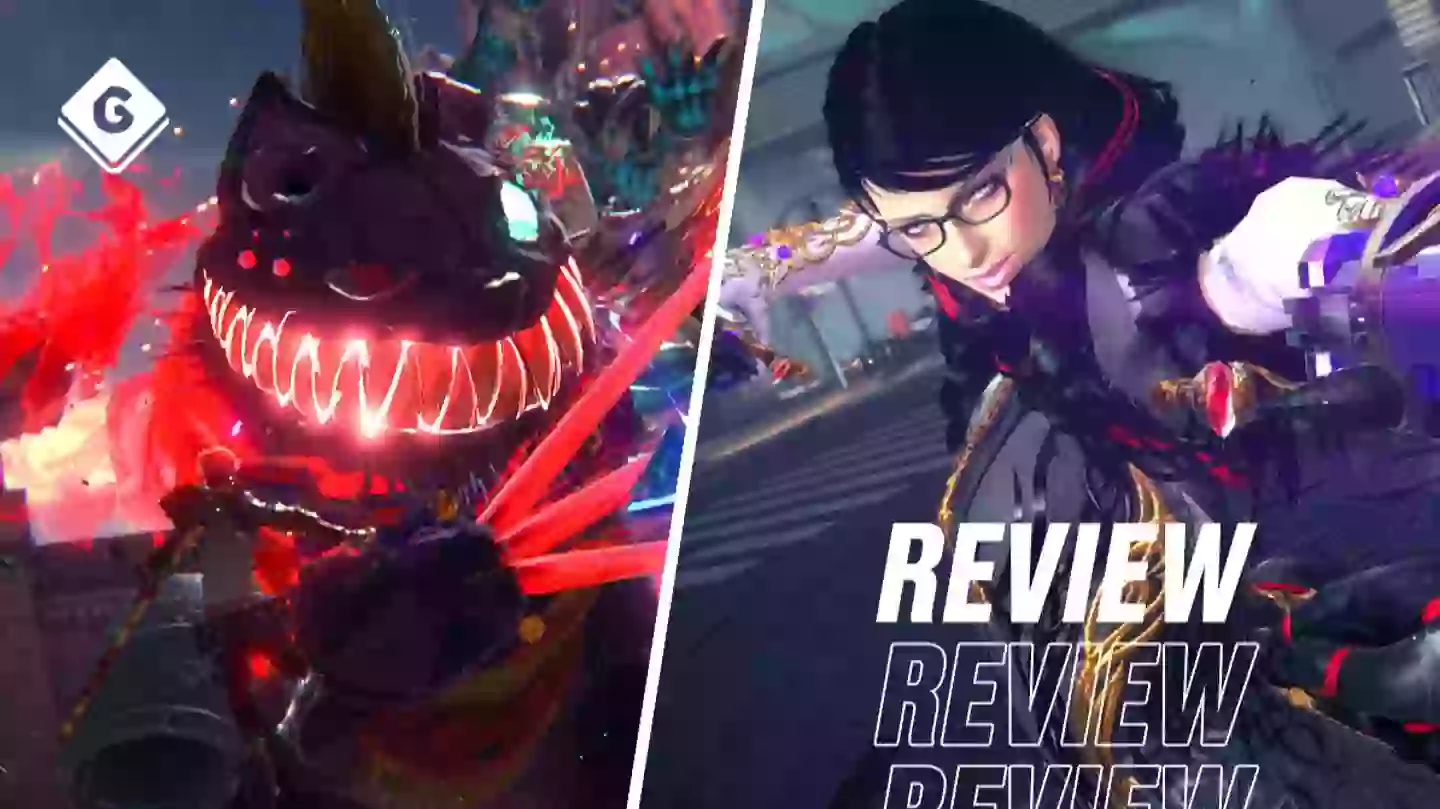
Fiendishly fun and devilishly difficult combat fine-tuned to perfection, a spellbinding story, and a winning cast of characters - that’s all here, and in spades. But really, all you need to know about Bayonetta 3 is that PlatinumGames have well and truly outdone themselves with a third instalment that not only maintains the near-faultless quality of their bewitching action series, but also solidifies itself as arguably the best Bayonetta title yet.
However, after sinking over 20 hours into the witch’s latest outing and wholeheartedly enjoying every moment, I’ve far, far more to say than can be summed up in a simple one-paragraph plea to give this title a go. So, let’s get into it, shall we? And you should probably get comfy, because this might take a while.
Check out our video preview for Bayonetta 3 below.
Bayonetta’s new jaunt sees her take on a new breed of enemies, this time not hailing from the heavenly Paradiso or the hellish depths of Inferno. Meet the Homunculi, goopy, turquoise, man-made bioweapons led by a mysterious entity known as Singularity.
Advert
Singularity’s goal is simple - destroy the multiverse. That’s right, Bayonetta 3 is basically Bayonetta in the Multiverse of Madness, except with arguably far-higher stakes than the Marvel movie from earlier this year (sorry, Doctor Strange). The Homunculi are tearing through each of the multiverse’s worlds one by one, and destroying the lot will give Singularity the power to wipe out the whole Trinity of Realities (Inferno, Paradiso and the human world) in one fell swoop.
Obviously, we don’t want that to happen, so it’s up to Bayonetta (AKA Cereza), Jeanne, and our new pal Viola to put an end to Singularity’s tyranny. Viola is a witch-in-training who hails from one of the alternate worlds that’s already been destroyed. She sets Bayonetta the task of hunting down ‘Chaos Gears’, as it’s said that when five of these are collected, it’s possible to take a trip to the parallel world of your choice, which would allow the titular witch to march into Singularity’s world, the Alphaverse, and send him packing.
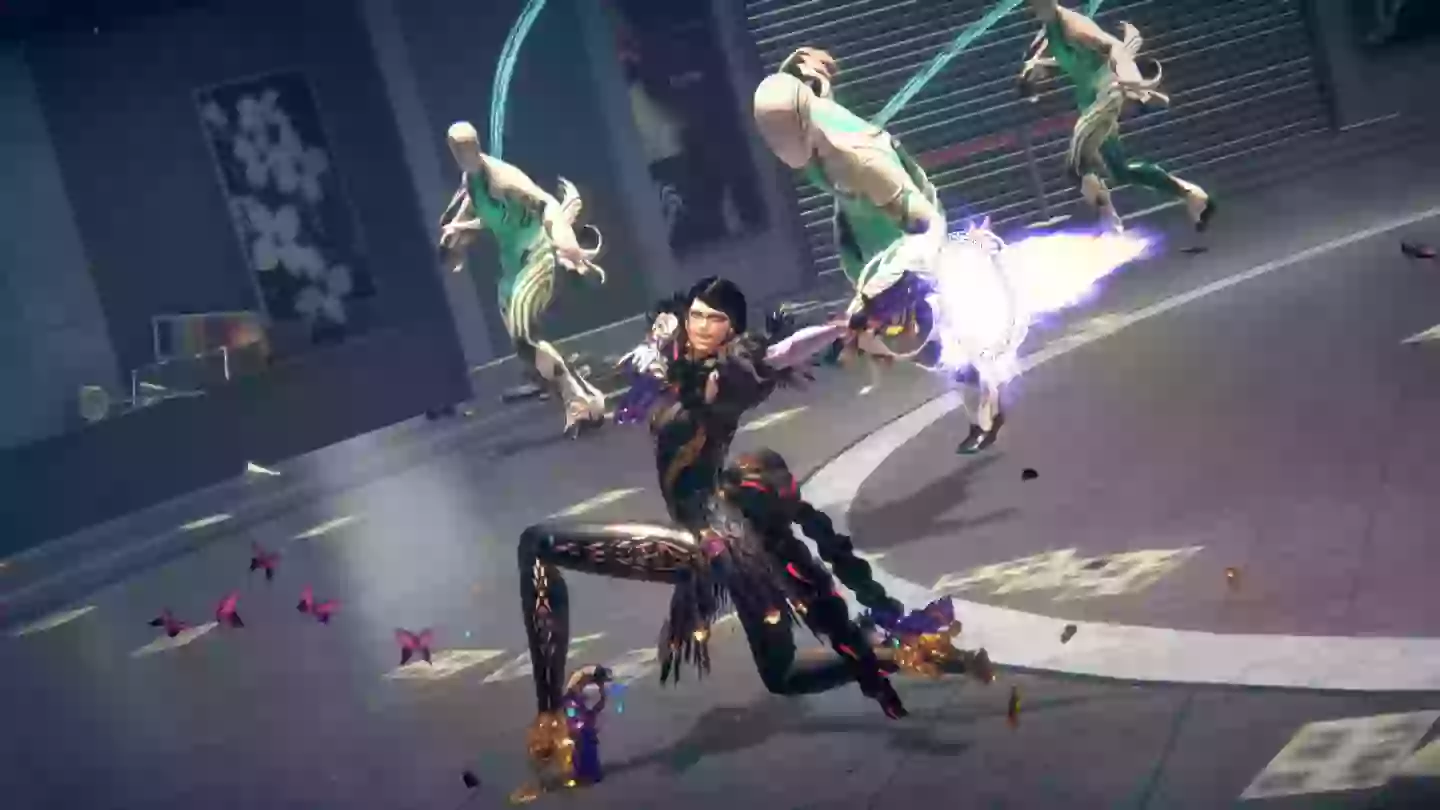
Finding Chaos Gears is no walk in the park - they’re scattered around different parallel worlds themselves, which Bayonetta can thankfully travel to (seemingly randomly) from the legendary island of Thule (a place made long ago by the Umbra and Lumen people). Hopping between realities is full of surprises, and also some very familiar faces - upon landing in an alternate version of Shinjuku, for example, Bayonetta sees a strange vision of a pink-haired version of herself. Even if all the Chaos Gears are collected though, the gang are told that they can’t do much without the help of a scientist named Dr Sigurd, who Jeanne is tasked with locating - more on that later.
Advert
At the heart of every Bayonetta game is its delightfully fluid, oh-so-satisfying combat. The witch’s previous outings did a phenomenal job of balancing real challenge and the feeling of Cereza herself being utterly unstoppable - if you die in a chapter or get a bad score, it feels like that’s on you. You failed her, not the other way round.
Well, despite our wicked protagonist having even more powerful tricks up her sleeve than before, this balance is perfectly preserved in Bayonetta 3. As well as Cereza’s usual array of brutal combo attacks and the iconic Witch Time ability (which slows time when she dodges an oncoming attack at the last split-second), this time around there’s a huge emphasis on using her Infernal Demon pals for some extra oomph in battle. With the Demon Slave ability being one of the main new additions to the game, Bayonetta is now able to summon her Demons straight from the depths of Inferno at pretty much any time, mid-fight, to crush her foes, which is just as gratifying as it sounds. Previously, appearances from her Demons were limited to Climaxes (huge finishing attacks) so you’d think this would feel overpowered, but it surprisingly doesn’t.
Using Demon Slave consumes your magic gauge, so Bayonetta can’t endlessly pummel enemies with Madama Butterfly, Gommorah and the gang without stopping to charge it back up again through regular combat. Since you’re given the reins to control the Demons directly, this leaves Bayonetta completely vulnerable to oncoming attacks - figuring out the right time to recall your Demons and get your own hands dirty is key to using this ability effectively.

Advert
Demon Slave isn’t introduced as a way to simply button mash and grind bad guys into the ground, either - the mechanic has its own set of tactics to master. Wink Slave, for example, triggers if you manage to summon one of your Demons right at the end of one of Bayonetta’s combos, for an even more powerful finish. Meanwhile, Assault Slave can be activated by summoning a Demon right before getting hit, launching a powerful counterattack. Being big ol’ powerful monsters, Demons are also great at stunning enemies, which leaves them wide open for Bayonetta to swoop in with a gruesome Torture Attack. Up to three Infernal Demons can be set at a time - using the D-Pad, you can switch between your fiendish friends mid-fight to strike opponents with their unique moves.
Next on the menu of devilish delights is the Demon Masquerade ability. By fusing with one of her Demons (each assigned to a specific weapon), Bayonetta can take on zany new forms which serve not only to boost her strength in combat and land some sickeningly powerful synergised attacks, but also to spice up her movement. Equipping the Dead End Express weapon and fusing with Wartrain Gouon, for example, will grant Cereza the body of a train, which is as baffling and ridiculously fun as it sounds. Chugging along in train form is faster than Bayonetta’s regular running speed, and you can also quickly surge forward in a straight line to pick up the pace.
Speaking of the different weapons, let’s talk about those. As well as Bayonetta’s base kit, the Colour My World guns (which allow her to fuse with Madama Butterfly), throughout the game she gets access to a whole array of armaments - all of which require very different fighting styles. The aforementioned Dead End Express is my personal favourite, and basically functions like a massive chainsaw which can also be charged to fire out huge saw blades. Meanwhile, Simoon (which lets Bayonetta fuse with the giant bird Demon, Malphas), serves as a fan weapon, allowing Cereza to assault enemies with wind attacks. Two weapons can be switched between using the L button without having to pause mid-fight, but you can also open the menu and change weapons manually at any time during chapters if you want to spice things up. Oh, and weapons are all earned through regular gameplay progression, too - none are locked behind a hefty price tag at Rodin’s shop, The Gates of Hell, as was often the case in the title’s predecessors.
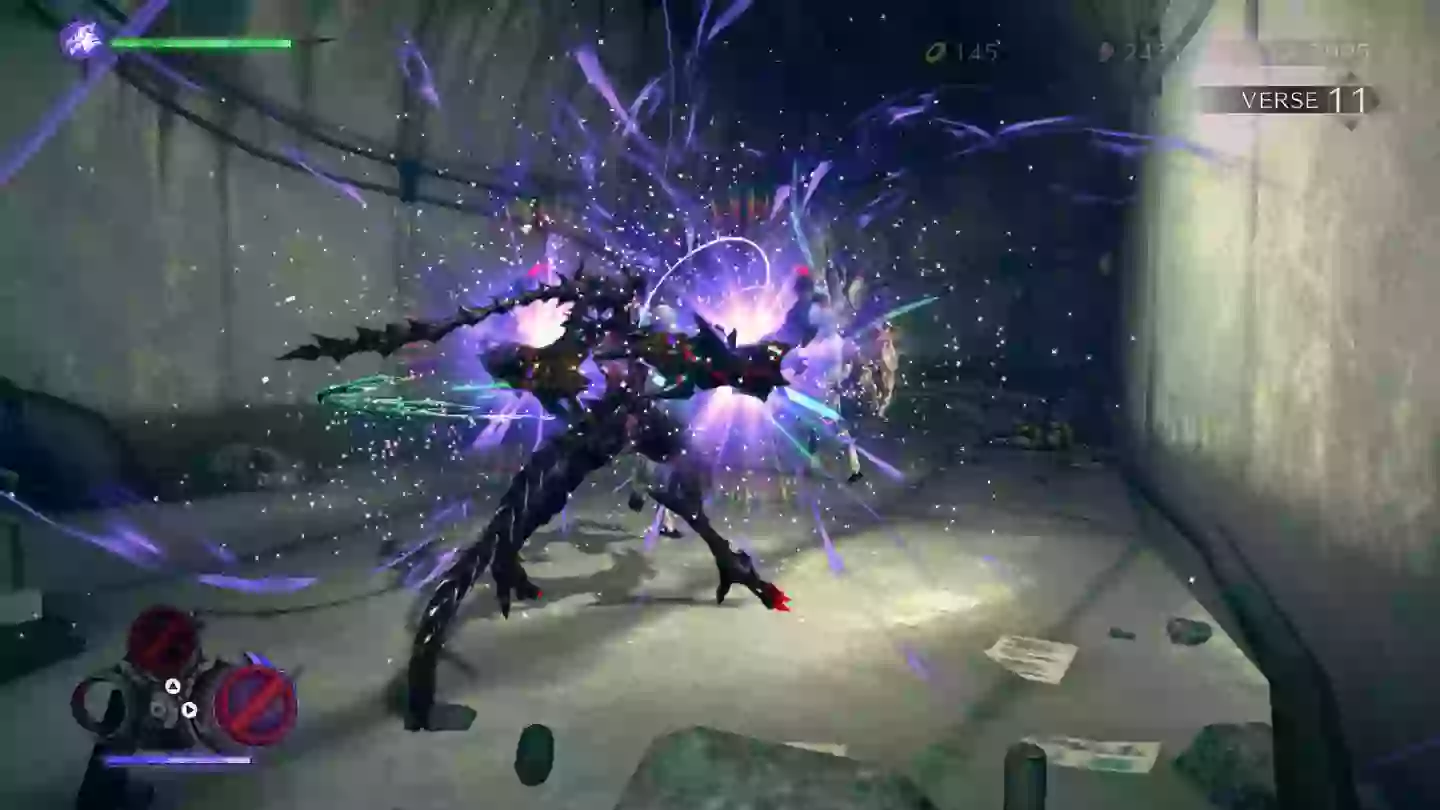
Advert
Each weapon boasts its own skill tree - by using currency dropped by the Homunculi (Seeds), and Orbs earned through pulling off big combos in battle, you’re able to unlock new abilities for both the weapon itself and the Demon attached to it. Using the skill trees is how you now unlock different moves, rather than through Rodin’s shop - I personally found this a much speedier process than in the previous titles, which required saving up Halos over multiple chapters to afford everything. Bayonetta and Viola both have skill trees for their base selves, too - here, you can also apply health and magic gauge upgrades using Witch Hearts and Moon Pearls, respectively.
At this point, I’m sure you’re wondering just who Viola is. This quirky witch-in-training is a completely new face to the Bayonetta series, and plays a prominent role in the threequel as a playable character. Depending on the chapter, you’ll either be controlling everyone’s favourite black-haired witch or this feisty newbie. Luckily, both characters are equally fun to play as, and Viola brings her own twists to combat which feel both fresh and fully realised.
Being a witch herself, Viola is able to use the Witch Time ability, but unlike Cereza, she activates it by parrying attacks with her katana right before they land rather than dodging them. As I highlighted in my preview, this can take a bit of getting used to since she can also dodge regularly using the exact same button as Bayonetta, but the concept is basically the same, so once you’ve gotten into the flow it’s just as intuitive. She also possesses one Infernal Demon of her own, named Cheshire, but he’s bound to her katana, which makes summoning him in battle a bit different, too.
To summon Cheshire, Viola has to toss her katana out into the field, and although this leaves her without her main weapon, she’s still able to continue fighting barehanded alongside her Demon (for as long as her magic gauge allows, that is). Without her katana, she’s unable to activate Witch Time, but isn’t totally defenceless thanks to the aforementioned dodge button. This setup does mean that you have less control over what Cheshire does while he’s out and about, but I personally had no issue with this - you can always recall and throw out the katana again in the direction of any new enemies if he strays a bit too far from the action.
Advert
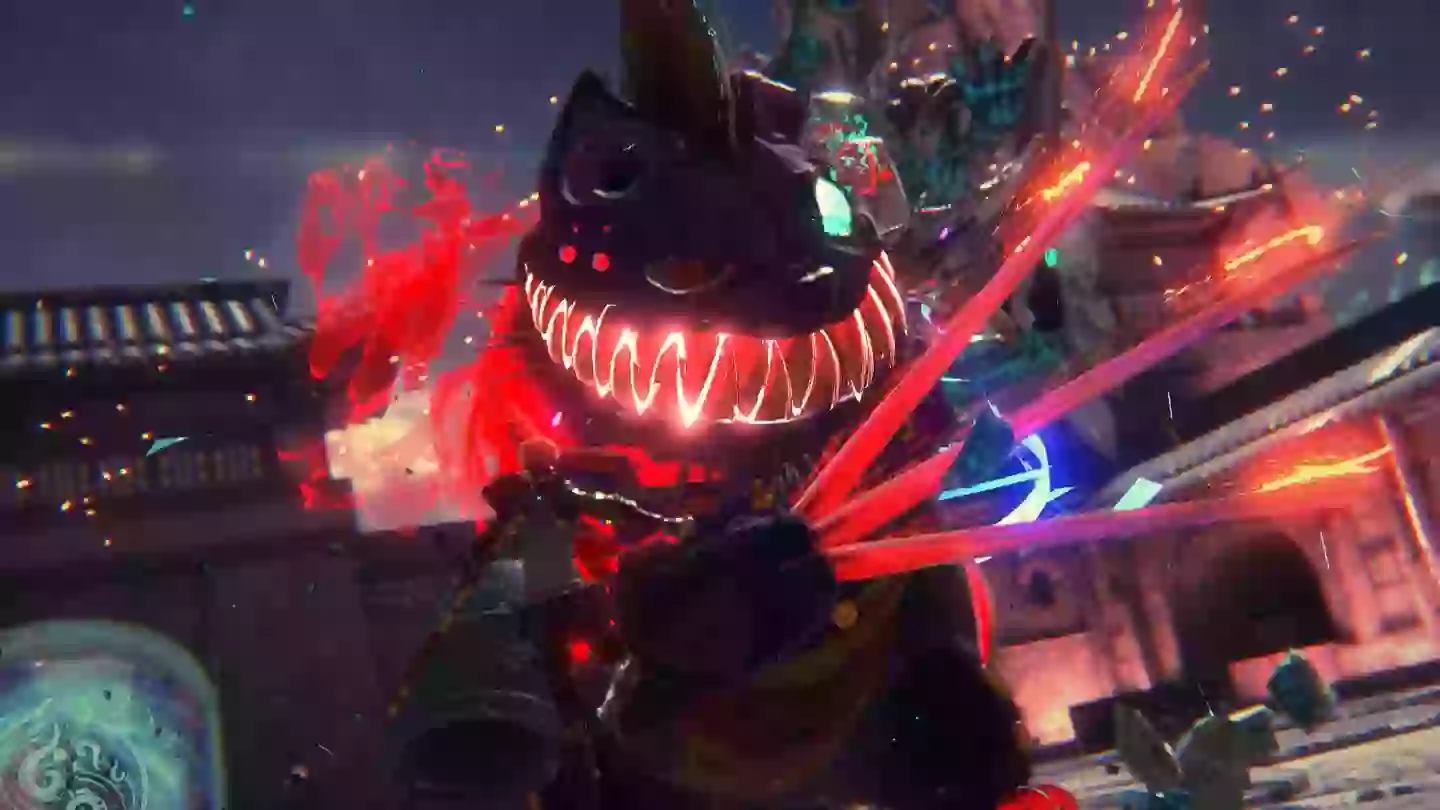
Unfortunately, Viola only has one set of weapons to use - that being her katana and magic darts (basically her equivalent to Bayonetta’s guns), which is a bit of a shame when you consider how many options Cereza has, but this is basically a necessity when you consider that Cheshire is her only Infernal Demon. This limitation didn’t bother me during my time playing, as I found the differences in Viola’s fighting style to be enough to keep things interesting.
I get the impression that Viola’s existence as a prevalent character in Bayonetta 3 could prove to be slightly contentious amongst fans. Her personality is wildly different to that of our regular protagonist - being an inexperienced witch, she doesn’t exactly conduct herself with the confidence and effortless style that players love and are used to from Cereza. This same naivety also sees Viola land in a good handful of comic relief-style situations, not dissimilar to the likes of the foul-mouthed informant Enzo, or the flirtatious journalist Luka in the past. However, due to the amount of screen time she has, and that she’s actually playable, I can imagine some might find her a little annoying rather than endearing. That said, I personally fell into the latter club and thoroughly enjoyed her presence, and I think her fun fighting style might also have those initially unmoved ultimately warm to her.
On the topic of playable characters, fans will no doubt be thrilled to know that Jeanne plays a prominent playable role throughout the game in her own unique side chapters. These short adventures follow the silver-haired witch’s exploits as she sneaks through a laboratory to find Dr Sigurd while Bayonetta’s out walloping bad guys and collecting Chaos Gears. These missions play nothing like any Bayonetta chapter you’ve ever encountered, as they’re time-limited, 2D side-scrolling stealth missions - Jeanne isn’t able to summon her demons, and so is forced to rely on her raw strength and strategy to take down any Homunculi in her path.
Utilising doors and vents, Jeanne can perform stealth attacks to take down enemies in one hit - this will also activate Witch Time, allowing her to dispatch more foes or find another hiding spot. She can collect some powerful projectiles to use on her opponents, too - these all have a limited amount of shots, so use them wisely.

It’s not just smaller enemies that Jeanne will encounter, either - she’ll also face some gnarly big bosses, which you’ll be tasked with taking down in this same side-scrolling format by jumping out of the way of attacks and firing away at weak spots to deal damage. Although these chapters aren’t as long or as in-depth as the main ones, the variety they add is very welcomed, and they’re a joy to play through (especially as they give Jeanne the extra screen time that she absolutely deserves).
Beyond its varied gameplay, something that Bayonetta 3 does an excellent job with is its replayability. Cereza’s previous two games were already fantastic for replay value - the medals awarded for each Verse (wave of enemies) served as shiny little temptations for players to try and best their previous scores, and even encourage those brave enough to aim for Pure Platinum completion (awarded for taking no damage, racking up a killer combo, and dispatching foes as quickly as possible). This is still the case, but there’s also a lot more to go at.
For a start, each main chapter hides three Umbran Tears of Blood (in short, collectibles; in long, the crystallised sorrows of the persecuted witches of old). These are found attached to crows, cats, and toads, often tucked away in difficult-to-reach areas or hard-to-spot locations. In previous instalments of the series, collecting Tears of Blood mostly just served as a bit of something extra to do - finding enough of them would reward players with a special accessory, but that was about it.
This time around, though, finding all three in a chapter unlocks a Phenomenal Remnant - an extra challenge chapter, set in the location of the one you just completed. The content of these varies, although they’re fairly bite-sized. For example, one might give you an allotted amount of time to find and complete a number of Verses, while another might have you running around picking up fragments of a treasure chest before time runs out.
Personally, the promise of new content drove me to try far harder to hunt down every one of these Tears of Blood I could - no mean feat as some of these things are incredibly well hidden. Despite thorough searching, I had to revisit a number of chapters to come back for some that I’d totally missed the first time (thankfully, opening the menu mid-chapter will show you what order they’ll be found in, so you know roughly when to be looking out for them). Catching them is also surprisingly challenging - capturing the crows is a case of following each bird’s flight path and finding a way to intercept it, and toads will begin croaking loudly when you approach, but the cats consistently proved to be particularly slippery customers. As soon as you approach them, they’ll bolt. There’s a chance I missed a trick here in how you’re actually meant to catch them, but some of these furry fellas had me running in loops for embarrassingly long amounts of time.
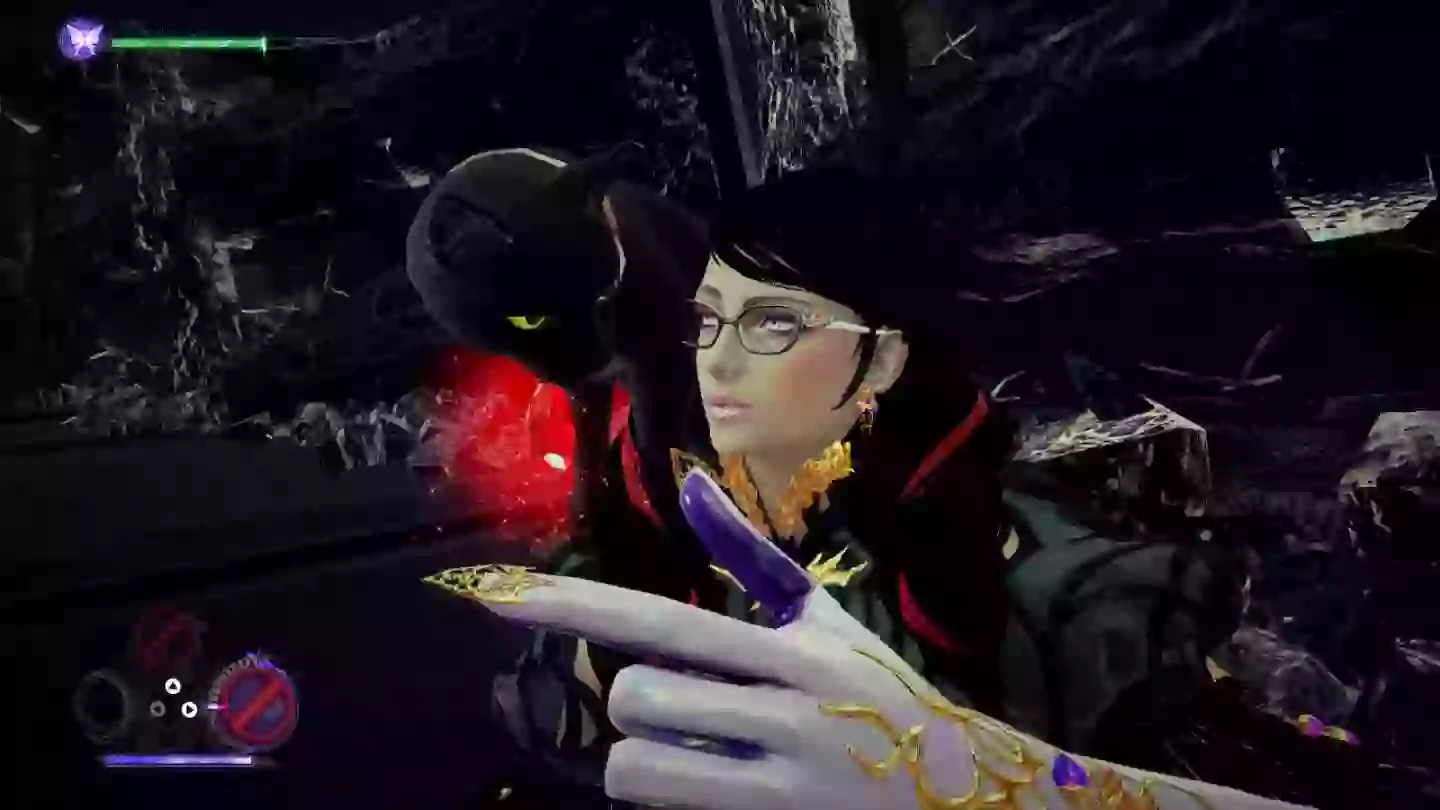
Additionally, each chapter has five Bewitchments - basically, achievements - to complete. Some of these you’ll inadvertently get through regular play, but others will require a little more effort. My only issue with these is that there’s no way to check a chapter’s Bewitchments while you’re already playing - even if you’re revisiting an area. This is only slightly irksome, but it’d be great to be able to check which achievements you’ve already ticked off and which you still have to go without having to return to the chapter select screen.
To top this all off, Bayonetta 3 allows players to jump back into chapters at different checkpoints, which makes going back to improve your score in a particular Verse, look for missed Verses, hunt down any stray Tears of Blood, or simply replay a specific part of the game supremely streamlined. On the chapter select screen, where you can check what medals you’ve been awarded for your performances in each Verse, you can also choose which checkpoint you’d like to jump back into. You’re shown exactly how many Verses there are in each checkpoint, so you can quickly decide where’s best to start from, depending on what you want to do. Of course, you can also decide to play the whole chapter from the start, but if you’re on a mission to Pure Platinum everything you won’t have to replay the entire thing if it’s only the occasional Verse you struggled in.
Being the third game in the series, there’s no doubt that some will be wondering just how important it is to have caught up with the previous two Bayonetta games. In short, very, if experiencing the story to its fullest is important to you. Although anyone could quite easily pick up the threequel and have a smashing time with the gameplay and combat, a lot of what makes the narrative gripping hinges on the player having prior knowledge of the series’ characters and their dynamics. I therefore implore you to check out the previous two games first - they’re both on Switch, are stellar titles in their own right, and if you focus on the main story quests the pair should only take you around 20 hours in total to complete.
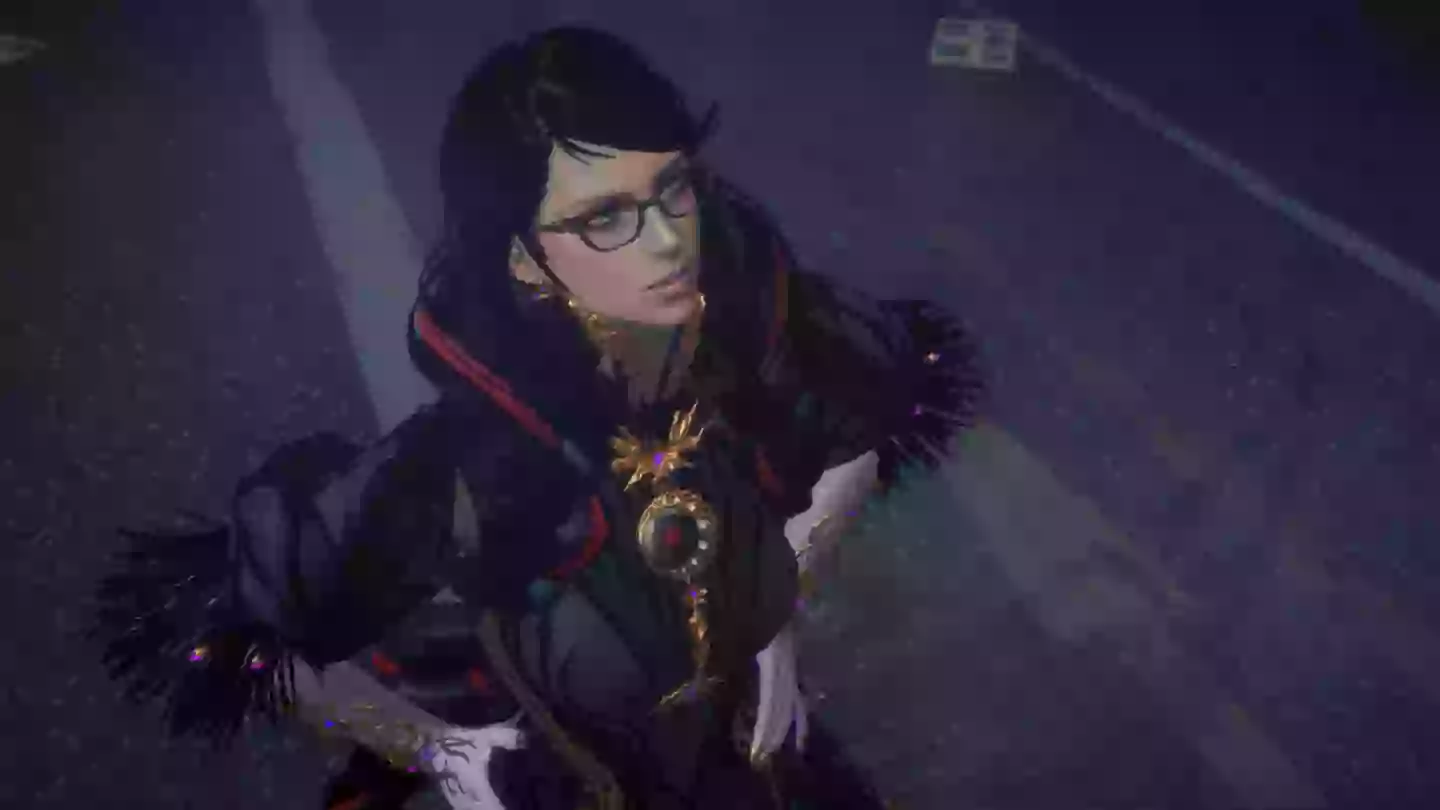
My only real complaint about Bayonetta 3 is that some plot points feel under-explained - while the series has always been fantastical, and far from ‘realistic’ with its narratives, this one raises a few questions that seem to be brushed over too quickly. Even so, the experience has continued to live rent free in my mind ever since I finished it. It took me around 22 hours to complete the main story - although I did revisit some chapters to grab missed Tears of Blood, so you could go through it faster if you were rushing.
I’d also like to give a special shoutout to the music in this game, specifically the main theme and the new Climax Mix song (which I’m not going to name here as I was so pleasantly surprised when I heard it in-game). During the review writing process, on multiple occasions, I turned on the game and paused during fights just so I could listen to these songs while I was writing - they’re definitely my new favourites, despite how good the likes of ‘Mysterious Destiny’ and the ‘Moon River’ Climax Mix are.
Bayonetta 3 is a near-perfect game. I’ve never considered that the combat in Bayonetta or its sequel was missing anything in particular, but the third game’s new inclusions are so well refined that it may be difficult to return to the previous titles having experienced this one. Furthermore, the story, despite a few confusing points, has easily cemented itself as my favourite of the three. Not only is this one of the Switch’s best titles of the year, it’s truly one of its strongest to date.
Pros: Flawless action gameplay which runs perfectly both in handheld and TV mode, a loveable cast of characters, music so catchy it’ll stay in your head for weeks.
Cons: A few under-explained plot points, more weapons for Viola would be nice.
For fans of: Devil May Cry, awesome female characters kicking ass.
9/10: Exceptional
Bayonetta 3 releases for Nintendo Switch on 28 October. Code for review was supplied by the publisher. Find a complete guide to GAMINGbible's review scores here. For the sake of transparency, it should be noted that LADbible Group has created promotional content for Bayonetta 3 which was published on the GAMINGbible Facebook page, in partnership with Nintendo UK, but this agreement has no bearing on the sentiments expressed in this article and its author has not been involved in the creation or publishing of said partnered material.
Topics: Nintendo, Nintendo Switch